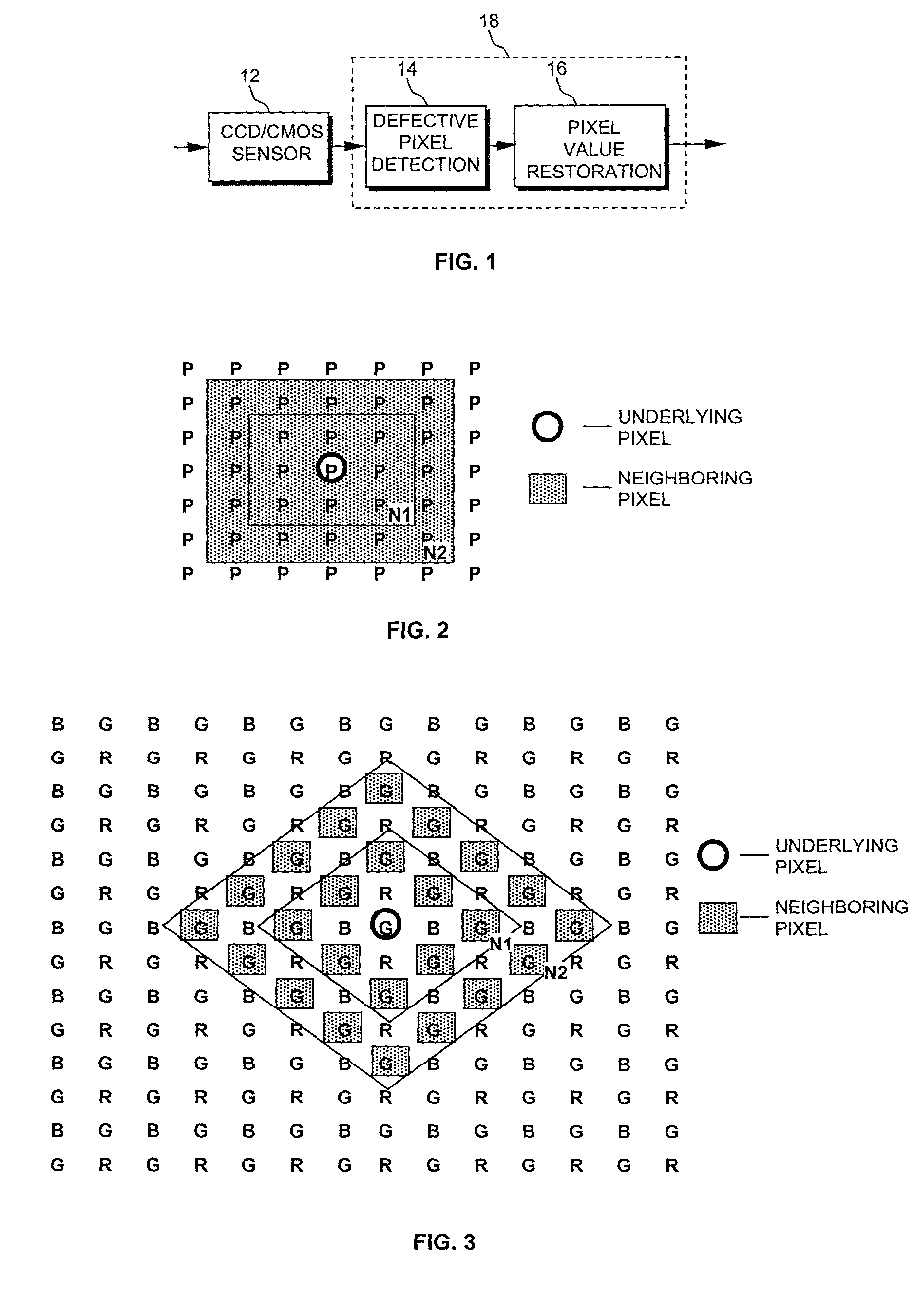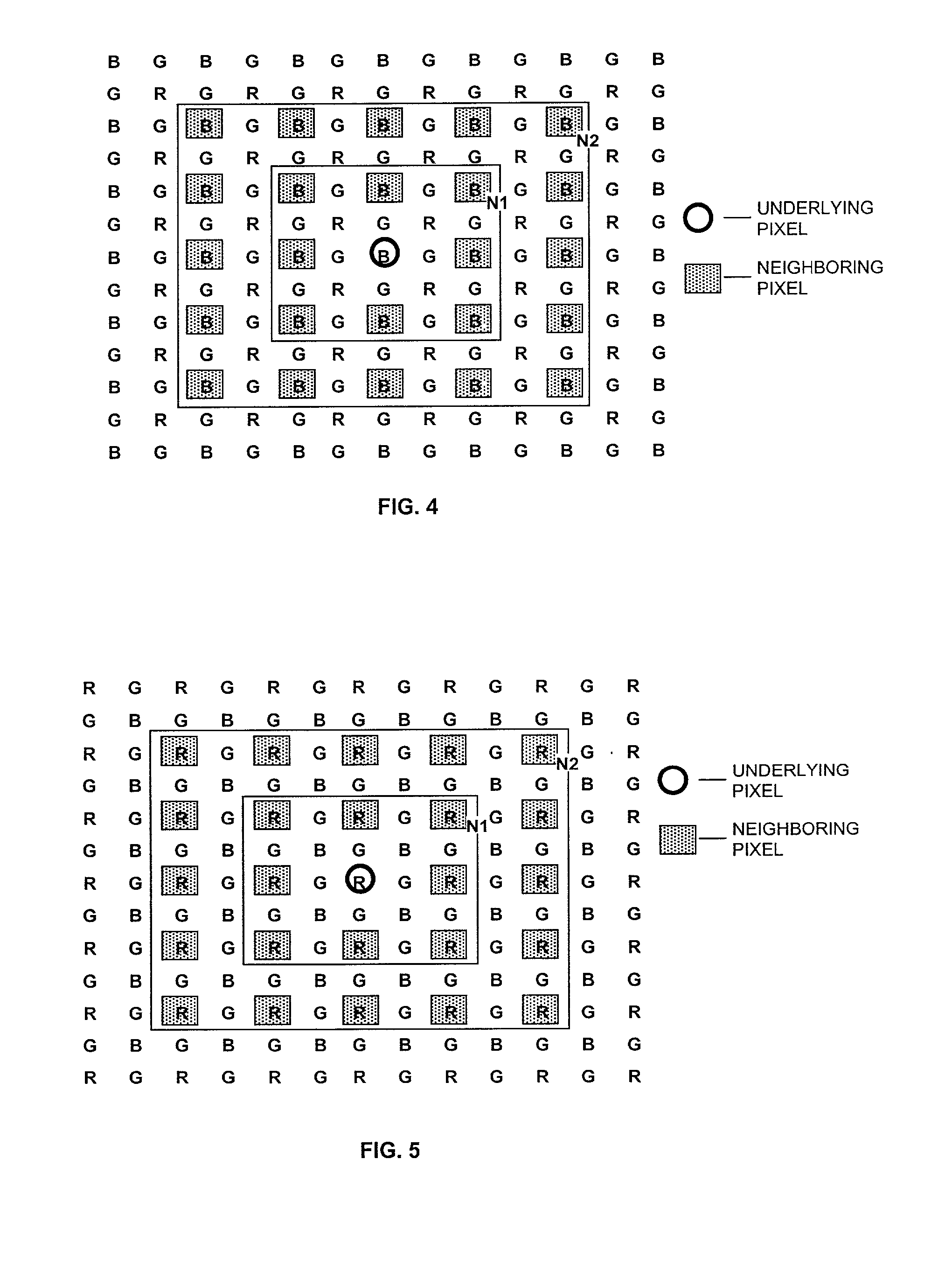Intelligent blemish control algorithm and apparatus
a blemish control algorithm and intelligent technology, applied in the field of digital image processing, can solve problems such as the visual effect of bad pixels being very annoying, the output of a ccd/cmos sensor subject to artifacts, and the pixel defects of solid-state sensors such as ccd/cmos sensors are common problems
- Summary
- Abstract
- Description
- Claims
- Application Information
AI Technical Summary
Problems solved by technology
Method used
Image
Examples
Embodiment Construction
[0030] With reference to the drawings, embodiments of an image processing method and apparatus, according to the present invention, is described below.
[0031] FIG. 1 shows a simplified high-level block diagram of an image processing unit 18, also referred to as an intelligent control circuit, that contains the main functional elements required to implement a blemish control algorithm, according to embodiments of the present invention. Image processing unit 18 includes a defective pixel detection stage 14 and a pixel value restoration stage 16. An output from a CCD / CMOS sensor device 12 feeds into image processing unit 18. Image processing unit 18 can operate with a CCD / CMOS sensor device in real-time, i.e., each time the CCD / CMOS feeds a new image to image processing unit 18. This means that image processing unit 18 can operate in the field well after such a sensor has been manufactured and placed into products.
[0032] In operation, defective pixel detection stage 14 examines each pix...
PUM
 Login to View More
Login to View More Abstract
Description
Claims
Application Information
 Login to View More
Login to View More - R&D
- Intellectual Property
- Life Sciences
- Materials
- Tech Scout
- Unparalleled Data Quality
- Higher Quality Content
- 60% Fewer Hallucinations
Browse by: Latest US Patents, China's latest patents, Technical Efficacy Thesaurus, Application Domain, Technology Topic, Popular Technical Reports.
© 2025 PatSnap. All rights reserved.Legal|Privacy policy|Modern Slavery Act Transparency Statement|Sitemap|About US| Contact US: help@patsnap.com



